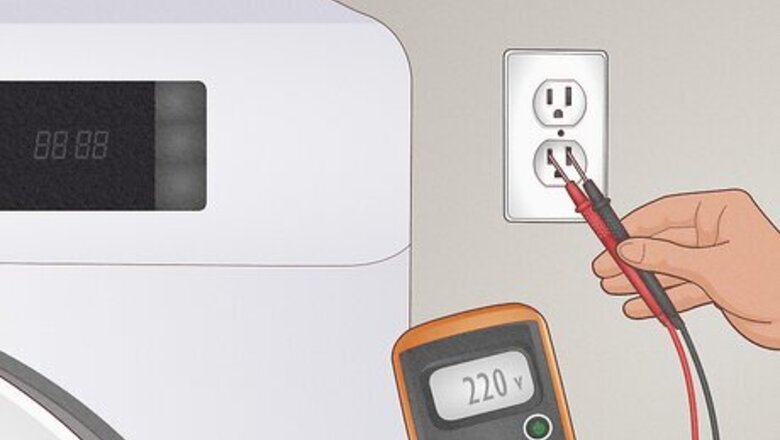
views
The dryer may not be getting power.
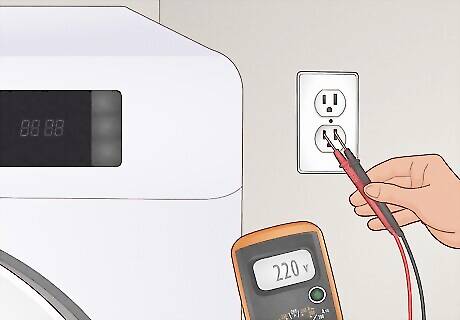
If your Whirlpool dryer won't turn on at all, check the power source. If the outlet your dryer is plugged into is not receiving power, nothing will happen when you turn the machine on. The fix: Try plugging another electronic device into the same outlet to see if it works. If it doesn't, the circuit breaker may have tripped, or the outlet itself may be malfunctioning. Also, check the power cord for damage and ensure it's properly connected to the dryer. Your Whirlpool dryer requires a 240-volt power supply for both 3 and 4-prong plugs.
The lint screen is dirty.

A clogged lint filter can prevent your dryer from drying your clothes. Always check your Whirlpool dryer's lint screen before turning it on. If the lint screen is clogged with lint, laundry detergent, or fabric softener, your dryer may stop before your clothes are dry, or not produce enough heat to dry your clothes in a reasonable amount of time. The fix: Remove the lint screen, and use your fingers to roll the lint off both sides. Also, check the slot the lint screen fits into for any lint buildup—you can use a vacuum to remove any accumulated lint. To clean built-up residue from cleaning products, wet both sides of the screen with hot water, then use a wet nylon brush with a little bit of liquid detergent and water to remove it. Whirlpool recommends doing this at least every six months.
There's a problem with the exhaust vent.
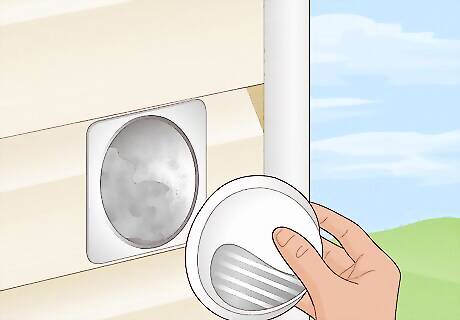
Your dryer's exhaust vent might be clogged or broken. Whirlpool recommends cleaning your dryer's exhaust vent—the thick hose that leads to the outside of your home—at least once every one to two years. If the vent is clogged, there won't be enough airflow to heat properly. The fix: To clean the vent, unplug your dryer, unscrew the vent hose from the dryer, and then remove the exhaust hood (vent cover) from the exterior of your house. You can then use a leaf blower or the hose attachment of a vacuum to quickly unclog the vent. Also check the vent hose to make sure it hasn't been crushed, collapsed, or ripped. The hose diameter should be 4", no larger or smaller, to ensure your dryer heats properly.
The load is too large.
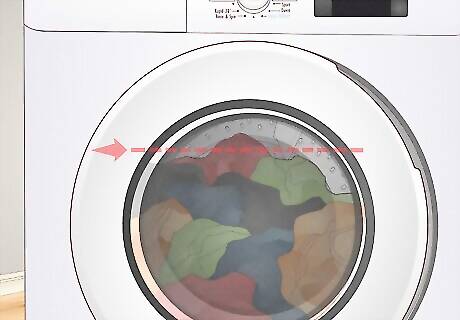
Your Whirlpool dryer needs enough space to circulate hot air. If you fill the drum with too many clothes at once (or you're trying to dry a bulky item like a thick comforter), it'll take much longer to dry. The fix: Take your clothes out of the dryer and check if any have dried. If some clothes appear dryer than others, try reducing the load size by half. In general, only fill the drum ¾ full to ensure proper heating.
The clothes are too wet.
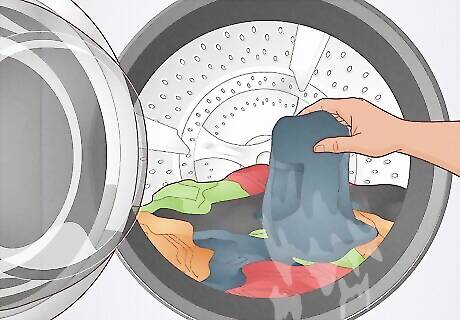
Soaking wet clothes create excess moisture in your Whirlpool dryer. If the dryer spins but doesn't seem to get hot enough to dry your clothes, they may be too wet to dry properly. The fix: If the clothes are dripping wet, run them through your washing machine on a spin cycle to remove excess water. Wring out wet rags, towels, bathing suits, and other clothes before placing them into the dryer.
The door isn't latching.
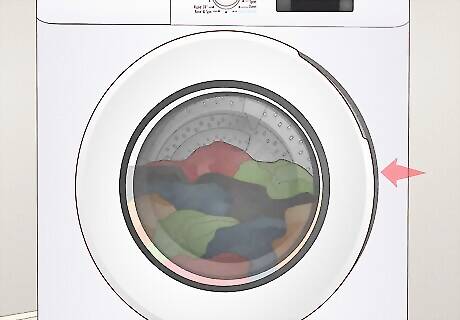
Your Whirlpool dryer might not realize you've closed the door. This happens when the latch that catches the dryer door is worn down or broken. If the dryer doesn't start at all, the door latch could be the culprit. The fix: Check the dryer door to make sure it doesn't open too easily—it should take a little force to open the door, and you should always hear a click when closing it. If the door isn't latching, you'll need to replace the latch. You can buy a replacement door latch kit for your specific model from Whirlpool or any retailer that carries genuine Whirlpool parts. To replace the latch: First, unplug the dryer. Then, you'll need to remove the seal that runs along the outside of the drum, which you can do with pliers—wedge the pliers under the seal, grab the thick wire behind it, and use the wire to pull the seal forward. Once removed, you'll be able to see the latch assembly when you look inside the drum. To remove the broken latch, use pliers to push the two pressure points above and below the latch, gently remove it, and then unplug it from its power source. When you install the new latch, plug its connectors back into the power source and reinstall the seal.
The heating element has burned out.
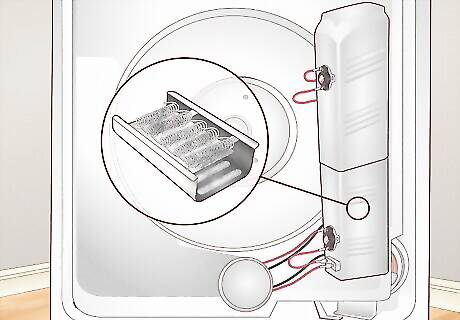
If your Whirlpool dryer is electric, the heating element may be damaged. Electric dryers use a heating element to heat the air in the drum. If the heating element burns out, the dryer will spin, but your clothes won't get dry. The fix: Because you'll need to disassemble your Whirlpool dryer to test and replace the heating element, Whirlpool recommends calling a professional for repair. If you feel comfortable testing the heating element for continuity with a multimeter, you can do so. Remember to unplug the dryer before opening it up.
There's a gas supply problem.
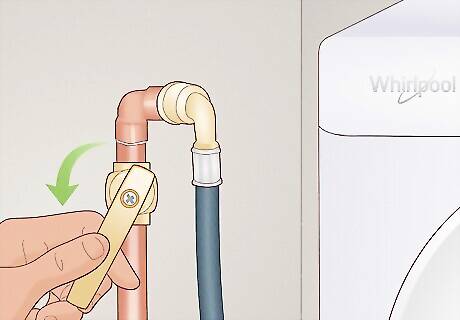
Whirlpool gas dryers require a functioning gas line to heat properly. If the dryer spins but doesn't get hot at all, the gas supply line may be turned off, or there could be an ignition problem. The fix: Check the gas valve on the back of your dryer. If the handle is parallel to the hose, the valve is open. If not, turn the valve to open it.. If the gas line is open but the dryer won't heat, there could be a problem with the ignition. If you feel comfortable doing so, you can remove the ignition and use a multimeter to test for continuity.
The thermal fuse has blown.

The thermal fuse will go off if the dryer gets too hot. When this happens, the dryer will shut down, and you won't be able to start it again until the fuse has been replaced. The fix: If the thermal fuse has blown, you must replace it before using your dryer again. Whirlpool doesn't recommend taking this on yourself, though if you're handy with electronics repair, you can order a replacement fuse online from Whirlpool's Accessories store.
The gas valve solenoid is bad.
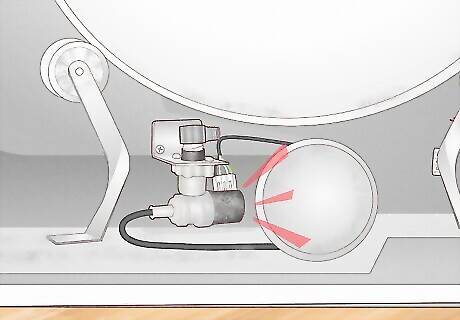
Gas dryers use solenoids to make the igniter ignite the gas. If the solenoid (gas valve coil) fails, the ignition will glow but won't actually ignite anything. There may be a solenoid problem if your Whirlpool dryer spins but doesn't get hot, or stops being hot as the cycle progresses. The fix: Replace the solenoid. You'll need to take the dryer apart to test and replace it, so it's best to contact a professional. If you're comfortable using a multimeter, you can test the solenoid: For a 2-terminal solenoid, connect the black and red meter leads to both terminals and test for resistance between 1,000 and 2,000 ohms. For a 3-terminal solenoid, connect the black meter lead to the first terminal, the red lead to the second, and test for resistance between 300 and 2,000 ohms. Then, keep the black lead on the first terminal and move the red lead to the third. Test again for a resistance level between 300 and 2,000 ohms. Resistance outside the range for these tests indicates a bad solenoid.










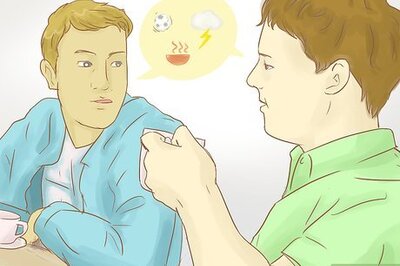
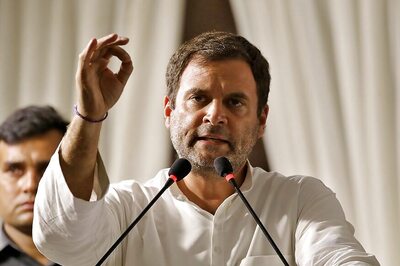


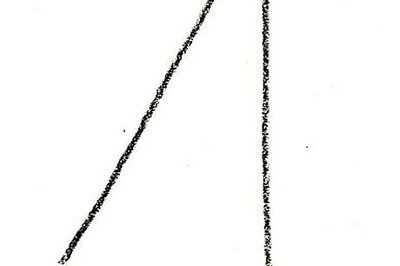




Comments
0 comment